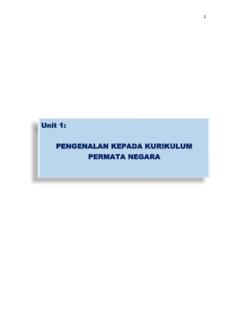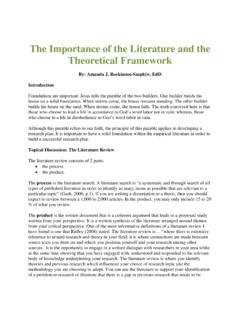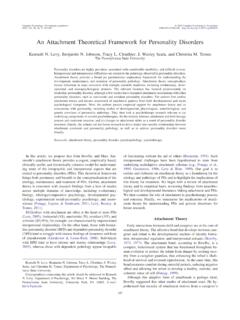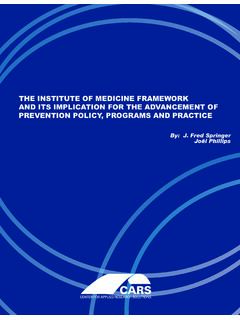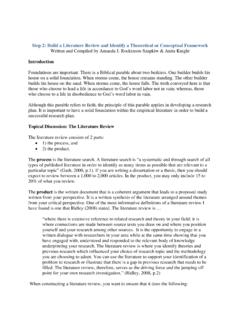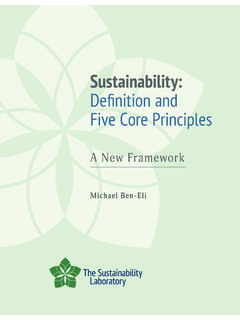Transcription of Example of a Theoretical Framework on Customer satisfaction
1 Example of a Theoretical Framework on Customer satisfaction Thomassen (2003, p. 69) defines satisfaction as follows: the perception of the Customer as a result of consciously or unconsciously comparing his experiences with his expectations . Kotler & Keller (2008, p. 80) build on this definition, stating that Customer satisfaction is determined by the degree to which someone is happy or disappointed with the observed performance of a product in relation to his or her expectations . Performance that is below expectations leads to a dissatisfied Customer , while performance that satisfies expectations produces satisfied customers. Expectations being exceeded leads to a very satisfied or even pleasantly surprised Customer (Kotler & Keller, 2003, p. 80). The definition of Zeithaml & Bitner (2003, p.)
2 86) is slightly different from that of Thomassen: satisfaction is the consumer fulfilment response. It is a judgement that a product or service feature, or the product of service itself, provides a pleasurable level of consumption-related fulfilment. The emphasis of Zeithaml & Bitner is thus on obtaining a certain satisfaction in relation to purchasing. The definition of Thomassen will be used in the current study, given the importance of perception. This meshes well with the offerings of company X, which fall into the luxury category. Although Zeithaml & Bitner (like Thomassen) say that Customer satisfaction is a reaction to the experience gained and focus on a certain satisfaction , there is no distinction between conscious and unconscious comparisons in their definition. Company X claims in its mission statement (see Chapter 1) that it wants to sell not only a product, but also a feeling; as a result, unconscious comparison will play an important role.
3 The definition of Thomassen is therefore more relevant to the current study. Thomassen s Customer satisfaction Model According to Thomassen, both the so-called value proposition and other influencers have an impact on final Customer satisfaction . In his satisfaction model (Fig. 1), Thomassen shows that word-of-mouth, personal needs, past experiences, and marketing and public relations determine customers needs and expectations. These factors are compared to their experiences, and this comparison between expectations and experiences determines a Customer s satisfaction level. Thomassen s model is important in this study, as it can reveal both to what extent company X s customers are satisfied and where improvements are necessary. Of course, you could analyze the concepts more thoroughly and compare additional definitions to each other.
4 You could also discuss the theories and ideas of key authors in greater detail and provide several models to illustrate different concepts. Reference: Sample Theoretical Framework of a thesis Date published October 14, 2015 by Sarah Vinz. Date updated: February 8, 2016.
